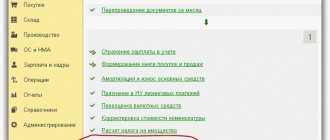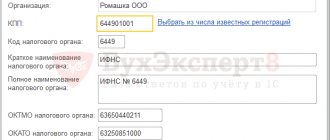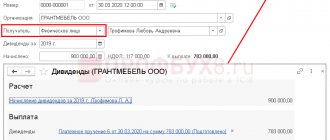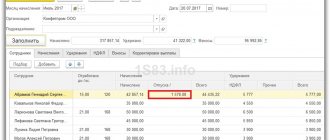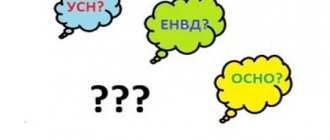The simplified taxation system (STS, simplified) is a special tax regime applied by organizations and individual entrepreneurs who have submitted an application to the Federal Tax Service for its application and meet the criteria for its application.
The conditions for applying the special regime are established by Chapter 26.2, Part 2 of the Tax Code of the Russian Federation. If they are violated, the application of the simplified tax system will be considered unlawful, with subsequent additional taxes being assessed based on the general taxation system.
Conditions for applying the simplified taxation system:
- the average number of employees does not exceed 100 people;
- the residual value of fixed assets is not more than 150 million rubles;
- annual income does not exceed 150 million rubles.
In addition to these restrictions, there is a ban on the use of a special regime for certain types of activities and if the organization has branches (Clause 3 of Article 346.12 Part 2 of the Tax Code of the Russian Federation).
Accounting under the simplified tax system
Accounting in organizations using the simplified tax system is mandatory.
Most often, they belong to small businesses (SMB), and have the right to carry out accounting in a simplified form. In addition, they keep books of income and expenses, which for this taxation system are tax registers. Read about the nuances of accounting under the simplified tax system in the article “Procedure for maintaining accounting under the simplified tax system (2020)”
An accounting register, which is an attribute of both complete ordinary and complete simplified accounting, is understood as a document in which all transactions are systematized by accounts and recorded in chronological order. For example, in account 51, a register is needed so that it can be seen for what purposes the funds were used.
The register forms are approved by the director of the company (Clause 5, Article 10 of Law No. 402-FZ).
The information summarized in the registers is transferred to the turnover sheet, and then to the financial statements. To record information in full simplified accounting, simplified accounting forms can be used - statement forms (Appendices 2–11 to Order of the Ministry of Finance dated December 21, 1998 No. 64n).
When using abbreviated or simple simplified accounting, instead of registers, they use a book for recording the facts of economic activity (Appendix 1 to the order of the Ministry of Finance dated December 21, 1998 No. 64n), and to record wages - form B-8 (Appendix 8 to the order of the Ministry of Finance dated December 21, 1998 No. 64n).
The report on the simplified tax system is prepared in a declaration in the form approved by order of the Federal Tax Service of Russia dated February 26, 2016 N ММВ-7-3/ [email protected]
For information about when you need to submit a “simplified” declaration, read the article “What are the deadlines for submitting a declaration under the simplified tax system?” .
For the declaration form and a sample of how to fill it out, see the article “Declaration under the simplified tax system for the year - how to fill it out?”
Before calculating tax in an accounting program, it is important to calculate it correctly. ConsultantPlus experts explained in detail how to do this. Full trial access to K+ is available for free. If you apply the simplified tax system “income”, this ready-made solution will help you, and if “income minus expenses” - then this material is for you.
nachislenie_usn_provodki.jpg
Related publications
The application of the simplified special tax regime is regulated by Chapter. 26.2 Tax Code of the Russian Federation. This system is distinguished by the ease of accounting, the possibility of paying a single tax, which replaces a number of mandatory fees, and the availability of benefits when calculating it. The simplified tax system remains a relevant scheme for small industries and small businesses. Let's look at how accounting is organized in "simplified" terms and what records accompany the accrual/payment of a single tax.
Accounts used in transactions for calculating tax under the simplified tax system
The reliability of the compiled balance sheet depends on the correctness of the reflection of the company’s economic activities in the accounting documents. This is ensured by accounting entries accompanying each financial transaction. Each fact of the company’s economic life must be recorded in its own way. This will create a perfect balance.
To organize using the simplified tax system, you need to correctly reflect costs and income in accounting. To generate transactions for the accrual and payment of income tax (for both options), the following accounts are used:
- account 51 - all transactions on receipt and debit of funds are recorded on it;
- account 68 - accrue income tax, including quarterly advances on it; records for other taxes are also made here;
- account 99 - reflects the amount of accrued simplified tax.
When calculating the simplified tax system, the following posting is used:
Dt 99 Kt 68.
Balance and registers
An enterprise, regardless of the chosen taxation system, draws up a balance sheet in accordance with standard double-entry accounting rules (Article 10 of Law No. 402-FZ).
To have this opportunity, companies register each transaction in the accounting register, including in the form of a transaction for calculating tax according to the simplified tax system on income or income minus expenses. In order to begin applying the simplification, the company must decide on the object of taxation. This could be income or the difference between income and expenses. Before starting to use such a system, the company must submit a corresponding notification to the inspectorate (Article 346.13 of the Tax Code of the Russian Federation).
The tax has been calculated according to the simplified tax system - we make the posting
Upon completion of each business transaction, the accountant reflects this fact with an accounting entry. The accounts used depend on the chart of accounts adopted by the company.
To keep records of various taxes, subaccounts are allocated in account 68. Their list must be specified in the accounting policy, guided by clause 4 of PBU 1/2008.
Account 68 can be divided into several sub-accounts, for example:
68.1 - calculations for the simplified tax system;
68.2 - calculations for personal income tax, etc.
A situation is possible when, at the end of the year, the total income tax turns out to be either more than the actual tax amount or less. In the first case, the tax amount must be added, in the second, it must be reduced. The wiring is as follows:
- simplified tax system accrued (posting for advance tax payment) - Dt 99–Kt 68.1;
- tax advance is transferred - Dt 68.1 - Kt 51;
- for the year, additional tax was accrued to the simplified tax system - posting Dt 99 - Kt 68.1;
- the tax according to the simplified tax system for the year was reduced (the excessively accrued advance was reversed) - reversal Dt 99 Kt 68.1.
The total amount of tax accrued for the year according to the declaration must be equal to the amount reflected in the accruals for the same period in accounts 99 and 68.1. If more advances are transferred than the tax accrued for the year, then the overpayment amount can be returned.
For information on how to write an application for a refund of overpaid tax, read the article “Sample application for a refund of overpaid tax .
How an LLC uses the simplified tax system to keep records of income and expenses, as well as what kind of reporting to submit, read in the Typical situation from ConsultantPlus. And if you are close to losing the right to use the simplified tax system, find out how the limits will change from 2021 by studying the explanations of ConsultantPlus experts. If you do not have access to the K+ system, get a trial online access for free.
Minimum tax amount
For companies that have chosen the “income minus expenses” object, the minimum tax rule applies. Thus, if at the end of the reporting year the amount of the calculated tax is less than 1% of the income received for the year, then a minimum tax in the amount of 1% of actual income is transferred to the budget. The minimum tax cannot be avoided even in the event of a loss, when expenses exceed income and there is no basis for calculating the regular tax. There is no minimum tax base only in one case - when the enterprise has no income at all for the period.
To calculate the minimum tax for the simplified tax system, the transactions look like this:
- Dt 99 Kt 68 - advance payment accrued;
- Dt 68 Kt 51 - tax is transferred to the budget (advance payment);
- Dt 99 Kt 68 - minimum tax accrued according to the simplified tax system;
- Dt 68 Kt 51 - additional payment of the minimum tax to the budget is transferred.
Results
Reflection in accounting of accrued tax under the simplified tax system is reflected in synthetic accounts 99 and 68. To maintain analytical accounting for synthetic accounts 68, 99, separate sub-accounts are opened, which must be indicated in the working chart of accounts and approved by the head of the organization (clause 4 of PBU 1/2008 ).
You can find more complete information on the topic in ConsultantPlus. Free trial access to the system for 2 days.
Organization of accounting
Organizations are required to keep records of accounting transactions in full in accordance with the Chart of Accounts and accounting standards.
Individual entrepreneurs are not required to keep accounting records and can limit themselves to maintaining tax records; in this case, no accounting entries arise.
A feature of the simplified taxation system is that both income and expenses are taken into account on a cash basis, that is, as payment is made. For the tax register - the book of income and expenses during simplification - paid income and expenses are selected.
Answers to accounting questions
The tax authorities may discover the arrears after receiving a declaration under the simplified tax system, and then the Federal Tax Service will send the payer a demand for payment of the arrears and penalties.
The taxpayer himself can also find it - in this case, he can independently calculate the amount of penalties, pay them along with the arrears, and then, if the tax amount was underestimated, submit an updated simplified tax return.
The obligation to pay advances and taxes is considered fulfilled at the moment of presentation of the payment order for their transfer to the bank, if there is a sufficient amount of money in the payer’s account (clause
1 clause 3 art. 45 of the Tax Code of the Russian Federation). Delay in the transfer of tax payments occurs the next day after the date established for their payment, and it is accrued for each calendar day before the day on which the debt is repaid (clause 3 of Article 75 of the Tax Code of the Russian Federation). Example: Advance payment for simplified tax system for the 1st quarter of 2021.
Calculation procedure
The calculation of deductions in connection with the application of the simplified tax system is carried out by taxpayers independently based on the results of the tax period, which is a calendar year. Within it, taxpayers calculate quarterly advance payments and pay them by April 25 for the 1st quarter, by July 25 for the 2nd quarter and by October 25 for the 3rd quarter.
At the end of the tax period, organizations pay tax by March 31, and individual entrepreneurs by April 30. As with any other tax regime, the taxpayer is obliged to organize accounting of settlements with the budget and the procedure for calculating the simplified tax.
Accounting for settlements is kept on accounting account 68.12, the debit of which shows the repayment of tax obligations, and the credit shows the accrual of tax in connection with the simplified tax system. Account balance 68.12 shows the total of settlements for the selected period.
Determine the financial result
Accounting errors
If you find accounting errors, correct them before you carry out the reformation. Prepare an accounting statement and make adjusting entries for December 31.
At the second stage of the reformation, it is necessary to close account 99 “Profits and losses”. To do this, enter a separate subaccount, for example, “Profit and Loss Balance,” and write off all other subaccounts to it. The final balance on account 99 must be transferred to account 84. If at the end of the year you made a profit, the posting is as follows:
Did you make a loss? Make the wiring:
As a result of the balance reform, the balance in account 99 “Profits and losses” as of January 1, 2021 will become zero. Now you can begin compiling accounting reports and distributing profits.
Example. How a small business can close the year and determine its financial result
Raduga LLC operates on a simplified income basis. For the year, taking into account deductions, 87,900 rubles were accrued. tax, of which 21,300 rubles. in the fourth quarter. Profit from core activities for 2021 amounted to RUB 1,230,000, and from other operations - RUB 850,000.
On December 31, the accountant reflected the additional tax accrued for the fourth quarter:
The company's accounting policy provides for a special sub-account “Profit and Loss Balance” to account 99. The accountant wrote off amounts from all other sub-accounts of this account to it. To do this I made the following wiring:
Simplified accounting
Organizations that have the status of small and micro enterprises can conduct simplified accounting under the simplified tax system. This means that you can take advantage of such privileges as:
- Have an abbreviated chart of accounts.
- Maintain simplified registers instead of filling out accounting statements.
- Submit financial statements in a simplified form.
- Micro-enterprises can do without debit and credit, i.e. Do not conduct accounting using the simplified tax system using the double entry method.
Accounting under the simplified tax system requires an accounting program. There is no way to get around this (vital) requirement. But, the presence of an accountant is sometimes called into question - is it necessary? Sometimes a business is not complicated, sometimes there are “savvy” entrepreneurs, and there are also situations when you want to do accounting under the simplified tax system yourself. Or by giving only a small amount of work to an accountant. And in such cases, the most important role is played by the accounting program; ideally, it should be extremely simple, despite accounting, which by definition is not simple, extremely automated and autonomous (no need to go to Yandex or Google, consultant plus, forums, tax websites etc. ). Simultaneous work (accountant, entrepreneur, managers) is also desirable. All these desires are very successfully combined in online accounting, it is always up-to-date and does not require updating on the part of the user, and it not only keeps records and generates reports (all accounting programs can do this), but also submits reports to regulatory authorities! The cost of work in Kontur Accounting starts from 1,500 rubles per quarter. After registration, you can work for free for a month (limitation – you cannot submit reports online):
Registration (14 days free)
Penalties: postings
But the correspondence in the loan will depend on which budget payment was overdue, that is, in connection with which certain penalties were accrued.
The most common budget payments that an employing company faces are contributions to pension, health and social insurance.
The deadline for their transfers is until the 15th day of the month following the billing month. Thus, this is a monthly payment, which due to various circumstances may be overdue. Penalties due to such delay are accrued based on the company's filing of quarterly reports. It contains data on accrued and paid amounts, therefore, the payee has the opportunity to compare the transfer dates and, if they are violated, the company is charged with penalties.
Usually, if we are talking about a delay of 1-2 days, for example, due to inconsistencies in the work of the accounting department and the length of the banking day, then the amount of penalties will be quite insignificant.
The role of the simplified tax system in enterprise accounting
Businesses are generally required to maintain accounting and tax records. When using the simplified tax system in activities, the reporting procedure is somewhat simplified. Guided by specific regulations, individual entrepreneurs and simplified organizations may not keep accounting records at all. Law No. 129-FZ of 1996 speaks about this.
However, commercial units are not exempt from preparing primary documentation. In practice, this means that it is mandatory to keep records of intangible assets and fixed assets. Accounting is necessary solely to determine the possibility of applying the simplified tax system. That is, the right to use this regime is lost as soon as the amount of fixed assets and assets exceeds a total of 100 million rubles. Accounting also becomes mandatory in the case of combining regimes, for example, UTII and “simplified”.
Depending on the chosen tax payment scheme by the base, the following may happen:
- profit - income;
- profit – income minus expenses.
When taxing income, profit is considered to be:
- revenue from the sale of goods or services;
- non-operating income.
Revenue recognition for tax purposes is carried out on a cash basis in some cases. Receipt of money into the cash register is recorded according to KUDiR. Certain types of profit are not taken into account (Article 251 of the Tax Code).
Not considered profit (for tax purposes):
- contributions to the authorized capital;
- pledge (deposit) in monetary or property form;
- earthly means;
- the value of property received for sale under an intermediary agreement.
When using the “income minus expenses” scheme, it is necessary to take into account material expenses. It is most often done by valuing the purchased item at unit price, average price, or first purchase (FIFO).
Costs in this case:
- salary;
- depreciation of fixed assets;
- material needs;
- social needs and so on.
Close accounts
Simplified tax
Before you start reforming your balance sheet, calculate the total tax amount for the year.
Balance sheet reformation is a write-off of the company’s financial results for the past year. It is carried out in two stages. The first step is to close accounts 90 and 91.
During the year, you recorded all the organization’s income and expenses for its main activities in account 90 “Sales”. The difference between revenue and costs was attributed to the subaccount “Profit (loss) from sales.” Profit or loss was written off on the last day of the month. If revenue exceeded costs, profit was reflected by posting:
If costs exceed the amount of revenue, then the organization suffered a loss. Then the wiring was like this:
In this case, at the end of the year you will have a zero balance in account 90. But the balances will be on sub-accounts to account 90. They need to be reset to zero. To do this, make the following entries in your accounting as of December 31:
Reformation date
Reform the balance sheet as of December 31, after you have reflected the last business transaction for the reporting year in the accounting records.
Every month you collected income from other types of credit activities and debit expenses in account 91 “Other income and expenses.” The financial result for other income and expenses was reflected by the following entries:
The balance of 91 accounts at the end of the year will be zero, and the amounts accumulated during the year will remain in the subaccounts. Close subaccounts with transactions:
As a result of the entries, the debit and credit turnovers on the subaccounts will be equal on both account 90 and account 91. On January 1, 2021, there will be no balance on either the synthetic accounts themselves or the subaccounts to them. This means that the first stage of the reformation has been completed.
Entrust your accounting to RosCo specialists!
offers accounting services with obvious benefits:
- guarantee of quality of accounting services. accounting of organizations thanks to a professional team. We always take into account the specifics and characteristics of a particular business when planning work;
- prompt solution of complex problems in the field of accounting. The desire to improve our qualifications, acquire new knowledge and expand practical experience allows us to take on any task;
- savings on remuneration for a full-time accountant, purchasing software, organizing a workplace, etc.
Accounting for losses from previous years
Special attention should be paid to the situation when your company uses the simplified tax system “Income minus expenses” and receives losses for several years. Even if the organization operates at a loss, the single tax will still have to be paid, but in a minimal amount. This figure is 1% of the income received. How to calculate tax and take into account losses - see the example below.
Favorit LLC uses the simplified tax system (the “income minus expenses” scheme). Favorit has the following financial indicators:
- In 2015, Favorit’s income amounted to 143,720 rubles, expenses – 187,330 rubles. A loss of 43,610 rubles was received. (187,330 rubles – 143,720 rubles), in connection with which a tax of 143,720 rubles was assessed. * 1% = 14.372 rub. (minimum value).
- Based on the results of 2021, Favorit’s income amounted to 133,840 rubles, expenses – 127,610 rubles. The tax base is reflected taking into account losses in 2013. At the end of 2021, a loss of 8,142 rubles was received. (RUB 133,840 – RUB 127,610 – RUB 14,372). 13,384 rubles were transferred to the budget. (1% of 2016 income).
- In 2021, “Favorite” received income of 178,990 rubles, expenses – 112,350 rubles. To determine the tax base for 2015, the Favorit accountant recorded the tax paid for 2021 and made the following calculation:
RUB 178,990 – 112.350 rub. – 13.384 rub. = 53.256 rub.
As of January 1, 2017, Favorit’s balance sheet included an outstanding loss from previous years of RUB 51,752. (RUB 43,610 + RUB 8,142).
Favorit's accountant calculated the single tax that must be paid for 2021 as follows:
(53,256 rubles – 51,752 rubles) * 15% = 226 rubles.
The following entries were made in Favorit’s accounting:
| Reporting period | Debit | Credit | Description | Sum |
| 2015 | 99 | 68 Single tax | The accrual of tax is reflected (the minimum indicator in connection with the resulting loss) | RUR 14,372 |
| 2015 | 68 Single tax | 51 | Single tax simplified tax system transferred to the budget | RUR 14,372 |
| 2016 | 99 | 68 Single tax | The accrual of tax is reflected (the minimum indicator in connection with the resulting loss) | RUR 13,384 |
| 2016 | 68 Single tax | 51 | Single tax simplified tax system transferred to the budget | RUR 13,384 |
| 2017 | 99 | 68 Single tax | The single tax of the simplified tax system was calculated taking into account previously received losses | 226 rub. |
| 2017 | 68 Single tax | 51 | Single tax simplified tax system transferred to the budget | 226 rub. |
